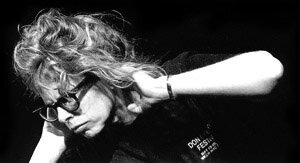The world is not ending–
/COVID Choirs Project
Chapter I: STORM
Translated from the Vulgate, Psalm 103, 4th c. CE. Origin 'The Great Hymn to the Aten' 14th c. BCE
For SATB choir, treble soloist, organ, & percussion.
Originally titled Psalm 104 and awarded the 2012 Carl von Ossietzky Composition Prize by University of Oldenberg, Storm was written to honor New York City’s experience during Hurricane Sandy in 2012. Brazelton translated text from the Septuagint’s Latin Psalm 104, placing the storm, flood, thunder and terror portions of the psalm in the past tense, and the recovery portions following, in the present.
The piece features a bass duet between basses Branch Fields and Ashraf Sewailam.
Above: The singers and musicians… as of April 2021.
Chapter II: Earthquake!
"The world is not ending—we've been here before"/COVID Choirs Project was undertaken in May 2020 by composer Kitty Brazelton to help many musicians—singers who had worked for her, instrumentalists who had played with her in bands—get back to work.
Everyone recorded themselves, quarantined, at home, and Kitty & team assembled it.
That took a long time.
Brazelton adapted choral pieces she'd written in the past for this new use. She chose pieces that spoke to the apocalyptic gloom in reaction to the pandemic, world climate, physical and political, and our loud inner questions and fears.
This piece, "Earthquake!" is inspired by a 1734 English translation of Quran Chapter 99 "The Earthquake" which tells of the Day of Judgment. But in the Islamic telling, it is the Earth herself who heralds to humanity God’s coming judgement.
For SATB choir, trombone, and piano.
Chapter III: FIRE
For SSATTB choir, flute, French horn, violins, synthesizer, & percussion.
Two witnesses describe reactions to the fiery protests of 2020.
Brazelton worked closely with composer and songwriter Ash Haywood to develop FIRE, which includes a solo interlude composed and performed by Haywood, who was writing from her Atlanta home at the time of the protests. Brazelton also reached out prima violinist Jennifer Choi in Portland OR and to composer/hornist John Eagle in Los Angeles, who designed and built the atmospheric ‘wind tubes’ instrument specifically for this piece. Haywood contributed improvisations on solo flute.





